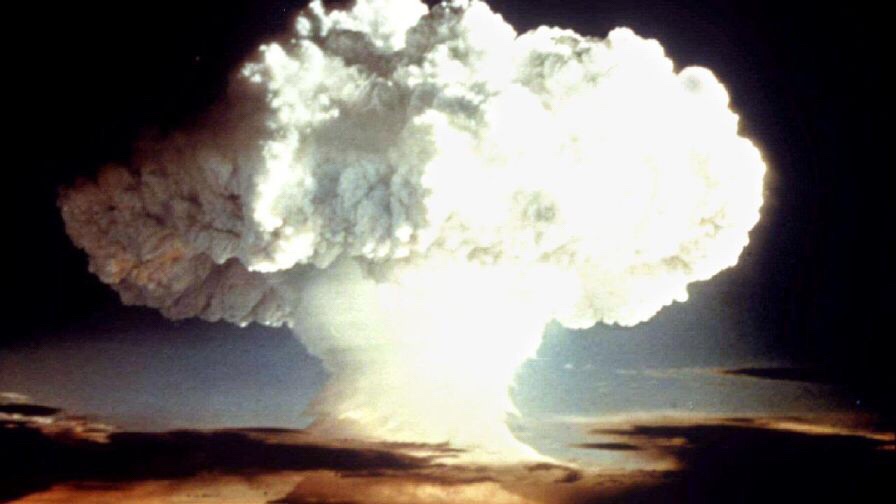 How to prepare and survive a nuclear bombing
How to prepare and survive a nuclear bombingLindsay Carlton
How to prepare and survive a nuclear bombing
The CDC wants the public to plan and prepare for the possibility of a nuclear strike as tensions rise between the United States and North Korea. What kind of steps can you take to protect yourself from radiation and other potential environmental hazards?
U.S. Intelligence believes that North Korea possesses as many as five dozen nuclear weapons, according to media reports. Furthermore, in November of 2017, the North tested a new kind of ballistic missile called a Hwasong-15 capable of hitting any city in the U.S.
Not only do nuclear bombs cause structural devastation where they explode, but those who survive are still likely to be contaminated by extreme and even lethal doses of radiation.
Dr. David Brenner, the director of Columbia University’s Center for Radiological Research, told Fox News that, depending on the size of the bomb, everyone within a half mile from the epicenter of the blast would die immediately.
The other major issue is the radiation fallout, he said — the residual radioactive material that gets released into the upper atmosphere following a nuclear blast. It looks like a massive mushroom cloud and, once the radiation begins to fall, the ground becomes full of dangerous radioactive material.
“The major source of radiation exposure is the radioactive material on the ground,” Brenner said.
“The immediate effects can be lethal, you can develop acute radiation syndrome which you can die from in a few minutes or hours. There are also lots of delayed syndromes where you may not die until a few weeks and even long-term effects like cancer risks,” said Brenner, who studies the effects of radiation in different settings, ranging from cancer radiotherapy and medical CT scans to radiological terrorism and the future of nuclear power.
According to the Centers for Disease Control, radiation syndrome is an acute illness caused by irradiation of the entire body by a high dose of penetrating radiation in a very short period of time.
The severity of symptoms depends on the type and amount of radiation, length of exposure and body part(s) that were exposed. Initial symptoms can include nausea, vomiting, headache, and diarrhea. These symptoms typically start within minutes or days after the exposure.
There are three severe types of radiation syndromes: bone marrow, gastrointestinal and cardiovascular (CV)/central nervous system (CNS) syndrome.
In the first one, the destruction of the bone marrow causes infection and hemorrhage and can become fatal within a few months. The gastrointestinal (GI) syndrome causes destructive and irreparable changes in the GI tract and death usually occurs within two weeks; and the CV/CNS syndrome typically causes death within three days due to the collapse of the circulatory system and increased pressure in the confining cranial vault.
If survivors can get to a working hospital, there are medications to treat these syndromes.
“One of the major things that happens if you’re exposed to a large dose of radiation is that your white blood cells get destroyed, so you need to be able to stimulate the bone marrow in your body to work doubly hard to generate new blood cells,” Brenner said. “And there are drugs that can be given to stimulate the bone marrow to work harder to create new blood cells,” he explained.
But with so many possible adverse health effects, what can people do to survive a nuclear bombing?
“If you’re outside the radius where the blast or fire will be fatal, the best thing to do is to go inside immediately. Do not try to run away – you don’t know which direction the fallout will be blown and upper-level winds are likely going in a different direction than surface winds,” said radiation safety specialist Andrew Karam.
“If you’re evacuating through the plume then there’s a good chance that you’ll be exposed to a fatal dose of radiation,” he said.
CDC DIRECTOR: NEW PARENTS, THIS ADVICE COULD SAVE YOUR BABY'S LIFE
Karam added that you should not try to pick your kids up from school, or pick your spouse up from work. It may be tempting, but if you’re in the fallout plume, going outside means very likely picking up enough radiation exposure to be fatal, for you and for your kids, he said.
Brenner also recommended you should stay inside a concrete building or basement away from windows for at least a day or two, until the most intense radiation outdoors decays away.
“Radioactivity has a half-life, it does simply decay away in roughly a day or two,” Brenner said.
In addition to acute radiation sickness, people who have been exposed to high doses of radiation can also have skin damage like severe itching, burns, blisters, ulcers and temporary hair loss.
If you were caught outside during a fallout, Brenner said to remove the clothes you were wearing and take a shower immediately.
No comments:
Post a Comment